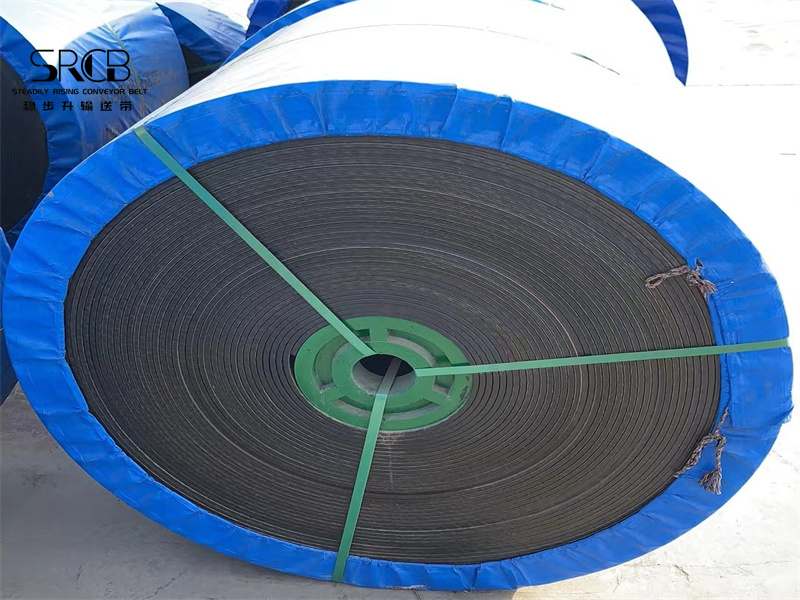
Whether the heat-resistant conveyor belt meets the environmental requirements
2024-03-10 00:37In January last year, our company shipped a 55-meter heat-resistant conveyor belt with a bandwidth of 1400mm to a coal mine in Papua New Guinea for the transmission and transportation of mining materials.
The heat-resistant conveyor belt is made of multi-layer rubber cotton canvas (polyester cotton cloth) or polyester canvas covered with high temperature resistant or heat-resistant rubber, and is vulcanized and bonded together at high temperature. It is suitable for transporting hot coke below 175℃. Cement, slag and hot castings, etc.
It is mainly used in metallurgy, construction and other industries to transport high-temperature materials such as sinter, coke, cement clinker, etc. The material temperature does not exceed 800°C and the belt surface temperature does not exceed 220°C.
The heat-resistant conveyor belt is a special conveyor belt with high temperature resistance, aging resistance, wear resistance and other characteristics. It is widely used in conveying material under a high temperature working environment such as metallurgy, mining, electric power and other industries. However, there is a question that concerned by people is whether the heat resistance conveyor belt meets the requirement of environmental production or not.
Firstly, the influence of selecting the material of the heat resistance conveyor belt is very important for environmental protection performance. Normally, the material of heat resistance usually include chloroprene rubber, silicone rubber, polyester fiber, etc. These materials themselves don’t have environmental pollution characteristic. In contrast, some materials of traditional conveyor belt such as rubber, nylon will produce the toxic and harmful gases easily in high temperature which can pollute the environment. Therefore, when selecting the heat resistance conveyor belt should be considered about using the environmental friendly material firstly to reduce the impact on the environment.
Secondly, the producing process of the heat resistance will has a certain impact on the environmental protection performance. In the production process of the traditional heat resistant conveyor belt, organic solvents, volatile organic compounds, etc. Are often used. These substances are easy to volatilize during the production process and produce harmful gases. We can adapt the low-volatile organic solvents or inorganic coatings to replace the traditional organic solvents to reduce environmental pollution. Meanwhile, strengthening the sealing of the production equipment and reducing the emission of the harmful gasses are also ways to improve environmental protection performance.
In addition, during the time of using heat resistant conveyor belt the maintenance and upkeep is also be connected closely with the environment protection. Poor maintenance will lead the conveyor belt occur the breakage and aging problems, thus increasing the frequency of replacement. Frequent replacement will not only waste the resources but also increasing the generation of the wasting. Therefore, regular maintenance work is very important that can extend the using life of conveyor belt. Reducing the resource waste, improve the environmental protection performance.
In addition, the waste process during the using time of conveyor belt need to be pay attention. Discarded heat resistant conveyor belt need to be classified according to the different regulations of different countries and regions to reduce the impact to the environment. We can choose the recycle or dispose reasonably such as through incineration, landfill, etc. Recycling is a priority method of protecting the environment. Discarded heat resistant conveyor belt could be reprocessed to reduce the resources waste and the pollution in environment.

